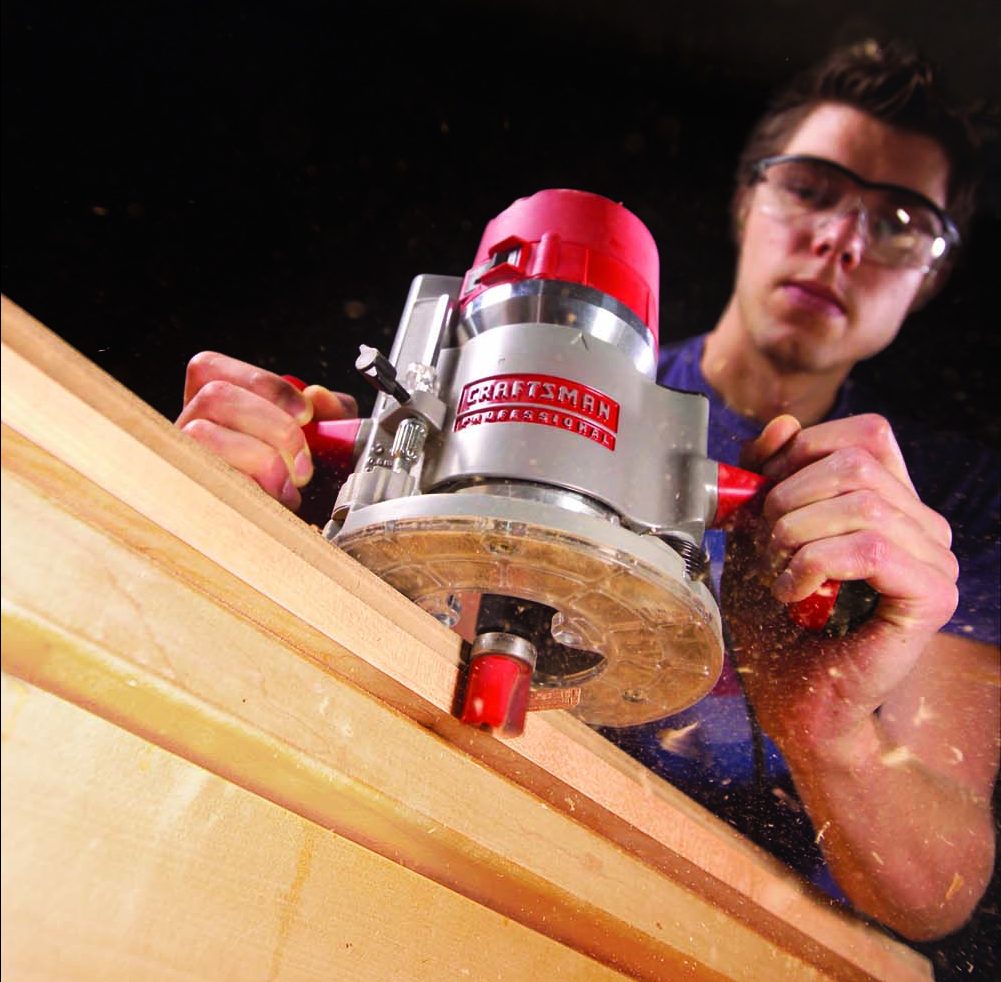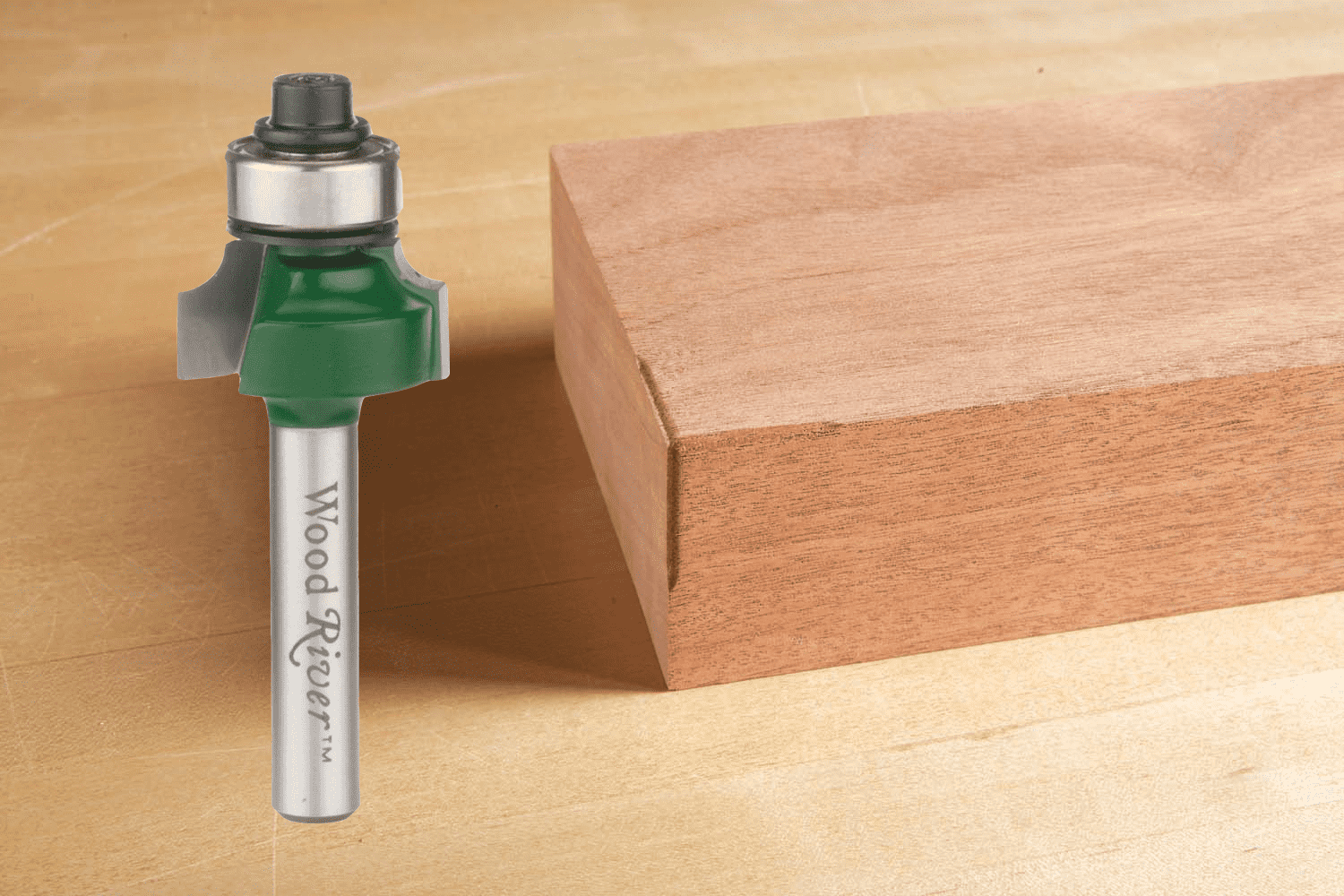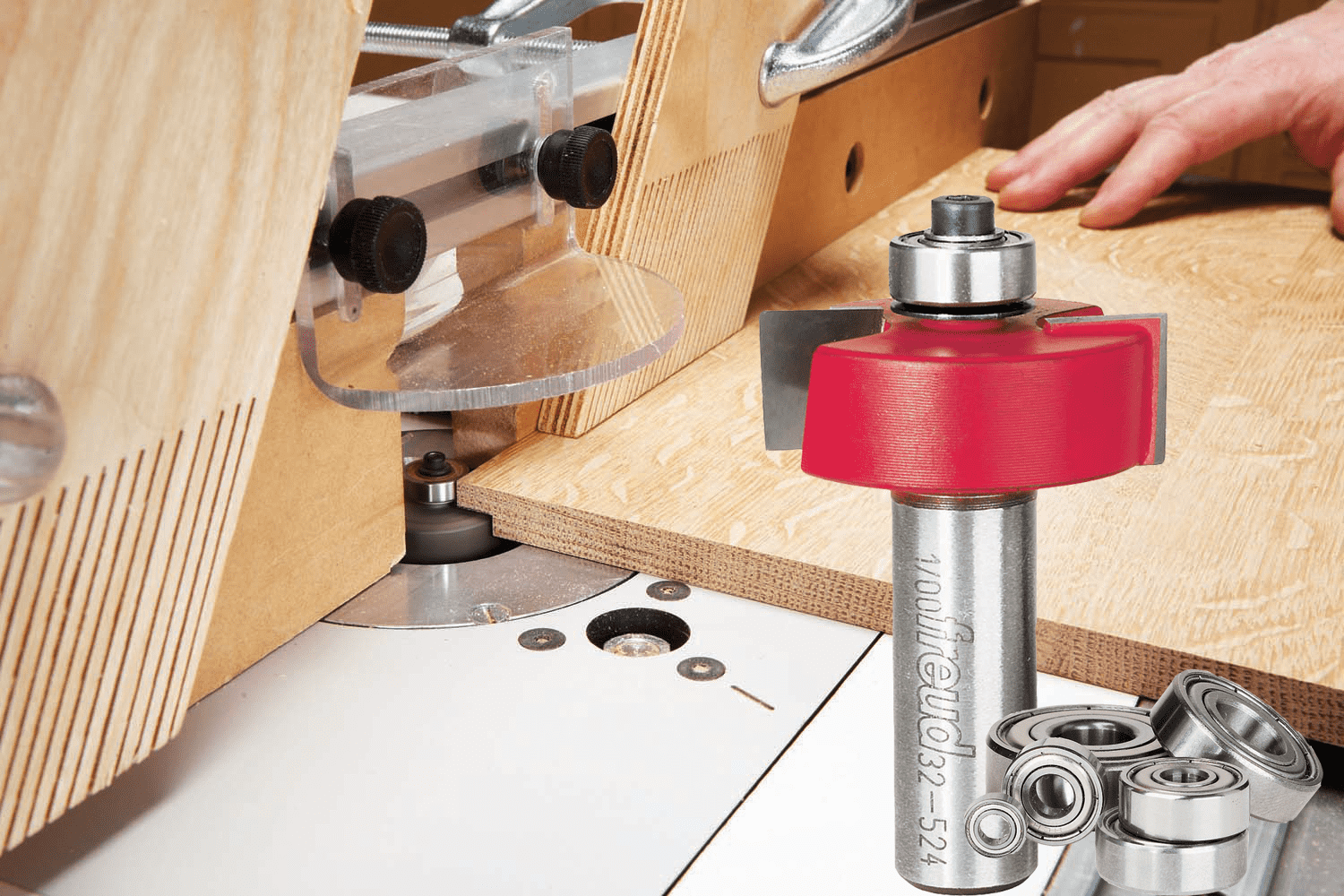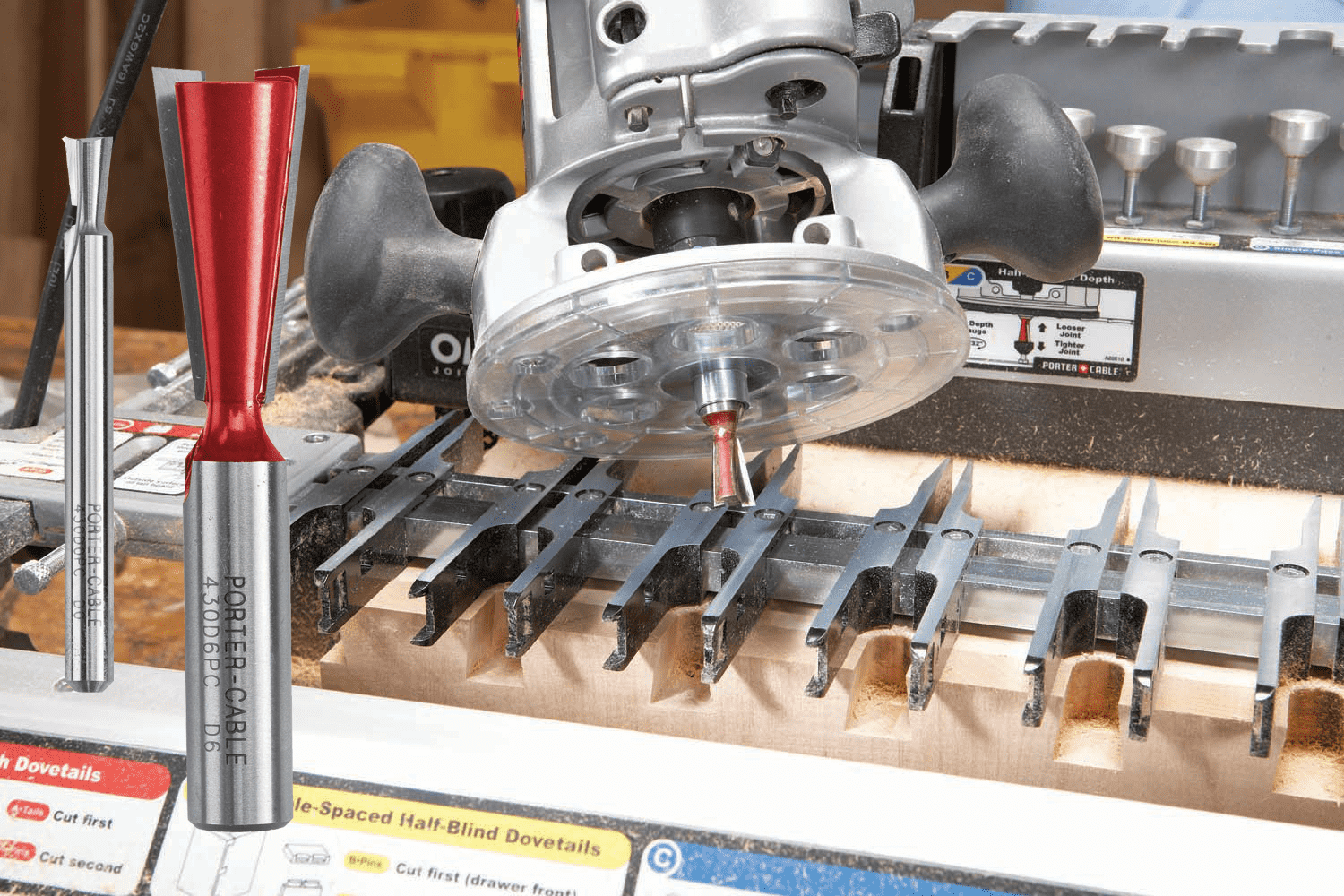We may receive a commission when you use our affiliate links. However, this does not impact our recommendations.

Add these great performers to advance your skills.
Increase your woodworking capabilities and maximize your router’s potential by adding these great performers to your collection of basic straight and edge-forming bits.
Tiny Roundover

Every router bit “starter set” includes at least one round-over profile, but it won’t be as small as this 1/8″ radius—or nearly as useful. Say “Goodbye” to tedious hand sanding. This little bad boy quickly and consistently eases sharp edges without significantly changing the appearance of a “square” edge profile. Such an “edge breaker” is so handy to have on hand that pros often keep it permanently mounted in a palm router. Shop On Amazon
Rabbeting Set

Sure, you can cut rabbets on a tablesaw. But only a rabbeting bit produces clean surfaces on both faces. You can also cut rabbets on a router table with a straight bit and a fence. But why bother with a fence when a rabbeting bit automatically sets the width? And a rabbeting bit is your only option if you want to cut a rabbet on a curved surface.
It goes without saying that a rabbeting bit will be included in that starter set. Chances are, though, you’ll be cutting rabbets in many different sizes. So rather than buying rabbeting bits in every size, doesn’t it make more sense to buy a set that cuts every size rabbet? Shop On Amazon
Stile and Rail Set

Making great-looking cabinet doors is fast and easy when you use dedicated stile and rail cutters. Rout the edges using one bit and the ends using the other. Voila! Choose from a number of attractive profiles, whether you go with a basic set that cuts a 1/4″ panel groove (shown here), a set that allows adjusting the groove’s width, or a top-of-the-line set that also allows adjusting the length of the tenons to increase the strength of the joints in larger, heavier doors. Shop On Amazon



Panel-Raiser
If you plan to build cabinets with raised-panel doors, investing in a panel-raising bit is a no-brainer. Typically available in bevel, cove and ogee profiles, panel-raising bits produce results in solid-wood panels that require only light finish sanding. The “back-cutter” bit shown here automatically creates a 1/4″ thick tongue by simultaneously routing both panel faces. Top-end “back-cutter bits allow adjusting the tongue’s thickness; basic panel-raising bits don’t have back cutters. Panel-raising bits must be used in a router table and typically require a 2-1/4 hp (or larger) router. Vertical-style panel-raising bits require less horsepower, but also require running the panel on edge, which can be more difficult. Vertical-style panel-raisers can’t be used for arched panels. Shop On Amazon
Up-cut Spiral

A straight plunge-routing bit routs a perfectly-good mortise, but a spiral up-cut bit allows working faster. The bottoms of both bits are designed to cut cleanly—a must for plunge routing. But the spiral flutes in an up-cut bit lift the chips and expel them through the top of the mortise, rather than leaving them packed inside, so you don’t have to spend time digging them out. The up-cutting action can cause minor tear-out at the edges of the mortise, but this usually isn’t a problem, because the tenon shoulders cover the joint. Spiral bits are available in both solid carbide and high-speed steel (HSS). Solid carbide bits cost more but stay sharp longer. Shop On Amazon
Double-Bearing Flush-Trim


As the go-to bit for template routing, you probably already have a flush-trim bit. So why pony up extra cash for the same bit with an extra bearing? Because it’s two bits in one, that’s why: A double-bearing flush-trim bit is also a pattern bit. That means you’ll save time whenever a portion of the profile you want to rout runs head-on against the grain. To avoid ruinous tear-out on such a profile (above), the standard procedure is to rout halfway with a flush-trim bit and then stop, flip over the work and switch to a pattern bit to finish the job. With a double-bearing flush-trim bit, you just lower the bit and go; you don’t waste time removing one bit and installing the other. Shop On Amazon
Slot Cutter Set

Splined joints guarantee a flush surface when you glue up a tabletop or panel. Simply rout slots and install splines. In fact, virtually any time you want to cut a slot up to 1/2″ deep, routing with a slot cutter provides the best consistency, accuracy and control. The bit consists of a shank with a bearing and (usually) a three- or four-wing cutter. To cut slots of different widths, you simply purchase additional cutters, which range between 1/16″ and 1/4″ thick. Stick with the same brand and you won’t have to buy another shank. For the ultimate convenience and adjustability, consider a set with different cutters, bearings and washers. After all, slots come in all sizes. Shop On Amazon
Specialty Dovetail

Your bit collection probably includes a 14° 1/2″ dovetail bit that came with your first dovetailing jig. It’s a perfectly good bit, but now that you’re weary of routing industrial-style half-blind dovetails with fixed spacing, you’re probably thinking of upgrading to a more capable jig—one that can rout through dovetails that look hand-cut, for example, in both thick and thin stock. That means you’ll also be adding dovetailing bits in different sizes, with flutes that slope at different angles. Note: These jigs often have proprietary designs that require dedicated bits. Shop On Amazon
Drawer Lock 

Making sturdy, good-looking drawers is as easy as 1-2-3 when you use a drawer lock bit (also called a lock rabbet bit). Rout the drawer sides vertically and the front and back horizontally. To make the sides flush with the front and back, use the same set-up for both operations. To create an overlay for a lipped drawer front (or to hide side-mount drawer slides), make the front appropriately longer than the back and adjust the fence to make a deeper cut. Shop On Amazon
Large Diameter Flush-Trim

Whether you’re flush-trimming tough end grain, a thick contour or a hardwood edge, a large diameter bit provides the best results. It leaves a smoother surface and is less likely to burn, chip or chatter than a smaller one. Go for the largest diameter your router can manage. Flush-trim bits (with the bearing mounted below the cutters) typically top out at 3/4″ dia. Pattern bits (with the bearing mounted above the cutters) come in larger sizes, such as the 1-1/8″ dia. bit shown here. Shop On Amazon
Lock Milter

 Nothing looks better than a perfect miter joint. But as we all know, miters can be tough to cut, fit and glue together. Fortunately, a lock miter bit solves all three problems. After installing the bit, you use the same set-up to rout both parts—one vertically and the other horizontally. After routing, the parts lock together to form a seamless corner that won’t slide out of position when you add glue and clamps. Yes, it’s true that lock miter bits can be difficult to set up. In fact, many manufacturers offer set-up blocks to aid the process. But Infinity Cutting Tools new lock miter master jig set solves the problem altogether. Shop On Amazon
Nothing looks better than a perfect miter joint. But as we all know, miters can be tough to cut, fit and glue together. Fortunately, a lock miter bit solves all three problems. After installing the bit, you use the same set-up to rout both parts—one vertically and the other horizontally. After routing, the parts lock together to form a seamless corner that won’t slide out of position when you add glue and clamps. Yes, it’s true that lock miter bits can be difficult to set up. In fact, many manufacturers offer set-up blocks to aid the process. But Infinity Cutting Tools new lock miter master jig set solves the problem altogether. Shop On Amazon
Beading Bit
No collection is complete without a beading bit. Whether used to soften blunt edges, define the panel inside a frame or disguise the gaps between a cabinet and its doors and drawers, this ancient form adds a touch of elegance that fits almost every furniture style. Shop On Amazon
Here are some supplies and tools we find essential in our everyday work around the shop. We may receive a commission from sales referred by our links; however, we have carefully selected these products for their usefulness and quality.













